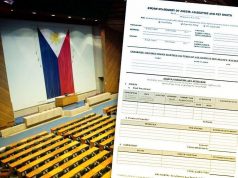Who is primarily responsible for worker discipline?
I’m the operations manager of a medium-sized factory. Our team leaders and shop floor supervisors are up in arms against our human resource (HR) manager, who requires us to personally handle the disciplining of errant workers. We argued that it should be done by HR, which is the expert in that area. Who’s correct? — Timber Lake.
First things first, if you want your children to keep their feet on the ground, put some weights on their shoulders. And when I say “weights” — that means giving them a reasonable amount of responsibility suited for their age and level of experience. This is the same advice I would give managers regardless of their rank, experience, and specialty, as long as they are supervising workers.
Here is a simple rule: Whoever made the hiring decision has the responsibility for firing. Therefore, if the operations department approves job applicants processed by the HR department, then that department is responsible for discipline, and not HR.
This doesn’t mean, however, that your department can’t consult with HR. Employee discipline is a team effort that can’t be left to HR, even though it professes to be the internal expert. Prevention is better than cure. Line supervisors and managers are daily witnesses to what’s going on in their respective departments and not HR. If there are issues to be resolved in terms of work performance, the responsibility for discipline falls to the worker’s supervisor and manager.
A typical case is absenteeism and tardiness. The first line of defense are the supervisors and managers. If an employee fails to meet basic attendance norms, it is the manager who can detect the problem and resolve it right away. Therefore, line executive should be the one to nip the problem in the bud.
BASIC STEPS
Employee discipline is difficult and stressful for everyone, including the line supervising executive, the worker, and the worker’s colleagues. Therefore, the best approach is to avoid having to impose sanctions against the employees. This does not mean ignoring their minor offenses, but rather proactively creating a positive work environment where everyone respects one another.
There are a few basic approaches you can pursue to avoid disciplining workers and resolving any potential or current issue with the least amount of conflict:
One, be approachable, kind, and sincere to all workers. Many workers are too timid to bring their work issues to their bosses, until they become apparent. Therefore, managers should initiate casual, short conversations with them. Visit their work areas for around five minutes. Talk to everyone, but not long enough to disturb their work. Do this regularly, but not to the extent that they suspect you of “snoopervising.”
Two, listen carefully to what an employee has to say. If you know how to listen, your success rate will rise. Some employees may not be happy with work conditions, current assignment, pay or even their boss. Whatever the issue, probe deeper. You don’t need to give automatic approval. If you listen actively, there’s a good chance of resolving problems before they arise.
Three, study the company’s code of conduct and related policies. Internalize the policy and ask questions of the HR department. Consult the HR manager on how to personally handle a problem worker and how to give the worker due process. Dynamic discipline policies typically have the legal definition of offenses, penalties that are in accordance with industry standards, templates of documents to be used, including the charge sheet or “notice to explain,” and a flow chart of the procedural due process.
Four, consult with the management committee in dismissal cases. It is better for the organization to convene an ad hoc committee composed of all department managers to decide as a whole. It should not be the responsibility of the department manager and HR manager alone, but the members of the entire management team. This ensures that such a decision takes into consideration the perspective of each manager.
Last, use the grievance machinery if your company has a labor union. This becomes handy if you’re dealing with a union member. Follow the established procedure for handling the complaint to increase the chances of the union accepting the decision. Sometimes, the union may appeal against termination. Don’t be swayed. Be firm and compassionate at the same time. If warranted, allow the employee to resign as an alternative to dismissal.
PROACTIVE COMMUNICATION
The key takeaway is to have a proactive and never-ending communication process with all workers. This is better done by line supervisors and managers, without exception. Obviously, HR can’t do it for your own workers. However, you can seek advice from HR in certain situations. Therefore, don’t force the issue by requiring HR to personally handle all disciplinary issues.
Don’t wash your hands of cases like these. Otherwise, it can become a serious issue between you and the HR manager. Note that even if you pass on the task to a management committee, it will not absolve you of anything. To make matters worse, you can even end up being viewed by your boss and HR as someone who does not understand the concept of division of labor.
It’s not too late for you to make amends with HR. The HR manager is your best friend and ally. There’s no point in making this a big issue, unless your top management decides to take a different approach, which I doubt very much considering the above-cited arguments. In any case, the purpose of discipline is to correct bad behavior rather than punish people. Therefore, don’t be remiss in performing this task, no matter how difficult it may be to you.
Send anonymous questions to elbonomics@gmail.com or via https://reyelbo.consulting



